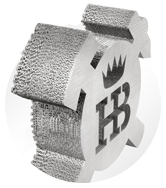Leipzig’s main station was truly impressive with its remarkable architecture and interior boasting the largest iron and glass roof construction. The new representative for the eastern region, Roland Etzrodt, received Rudolf Haver with a camera around his neck.
Still in the historic station, which dates back to 1915, he took the first photos of his superior. This was followed by an arranged city tour. The Monument to the Battle of the Nations – one of the largest monuments in Europe – was on the list, as was St. Thomas Church, which became famous as Johann Sebastian Bach's place of work. Rudolf Haver was happy to be photographed there. Click, click. Roland Etzrodt was completely in his element. Rudolf Haver in front of the Bach Museum, click. Rudolf Haver in front of the Gewandhaus, click. Rudolf Haver in front of the Nikolaikirche, click.
Rudolf Haver enjoyed the cultural trip, raved about the historical sites in Oelde and looked forward to the photos taken by Mr. Etzrodt. When he still had no pictures after two weeks, he called Roland Etzrodt. He stuttered slightly at the other end of the line, confessing meekly: “Unfortunately, I didn’t have any film in my camera.”
Rudolf Haver’s disappointment was clearly apparent. It softened somewhat when Mr. Etzrodt soon sent him a small album in which all the sights were recorded – only Rudolf Haver was missing in front of them. Today, modern image editing programs would make it easy to copy them in. At that time, Rudolf Haver and Roland Etzrodt should have repeated the tour – but this didn’t happen.





